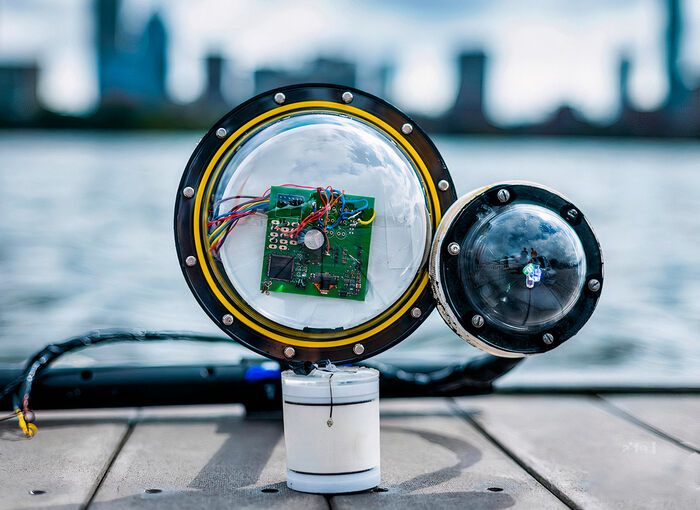MIT engineers create a wireless underwater camera without batteries
According to some estimates by scientists, more than 95 per cent of the earth’s ocean has never been observed, meaning we have seen less of our planet’s ocean than the far side of the moon or Martian surface. One major challenge which prevents widespread undersea exploration is the high expense of powering a wireless underwater camera for a long time. If we do that now, it will require tethering it to a research vessel or regularly sending a ship to repower the batteries.

Some engineers from MIT have taken a giant step to deal with this problem by creating an ultra-efficient battery-free and wireless underwater camera. It is approximately 1,00,000 times more energy-efficient than the other undersea cameras. This device can take colour photos and transmit image data even in the dark underwater environment wirelessly through the water.
The feature that makes this autonomous camera extraordinary from the other underwater cameras is that it is powered by sound meaning it converts mechanical energy into electrical energy from sound waves travelling through water which powers its communications and imaging equipment. The camera also utilizes sound waves to transmit data to a receiver that can rebuild the image after capturing and encoding the image data.
Since it does not need a power source, the camera could operate for weeks on end before retrieval this would allow scientists to explore remote parts of the ocean pollution or supervise the growth and health of fish raised in the aquaculture farms.
“One of the most exciting applications of this camera for me personally is in the context of climate monitoring. We are building climate models, but we are missing data from over 95 per cent of the ocean. This technology could help us build more accurate climate models and better understand how climate change impacts the underwater world,” says Fadel Adib, senior author of a new paper on the system. He is an associate professor in the Department of Electrical Engineering and Computer Science and director of the Signal Kinetics group in the MIT Media Lab.
Source: scitechdaily.com
Other co-lead authors and signal kinetics group research assistants joining Adib on the paper are Sayed Saad Afzal, Osvy Rodriguez, Waleed Akbar, research scientist Unsoo Haa and former group researchers Mario Doumet and Reza Ghaffarivardavagh. The paper is published in the ‘Nature Communications journal on 26th September 2022.
Going Battery Free
Scientists needed a camera that could run autonomously for long periods and could harvest energy underwater while draining very little power. Piezoelectric material-made transducers are used in the camera’s exterior to acquire energy.
They create an electric signal when a mechanical force is applied to them, they vibrate and convert the mechanical energy to electrical energy when a sound wave travelling through the water hits the transducers.
“We were trying to minimize the hardware as much as possible, and that creates new constraints on how to build the system, send information, and perform image reconstruction. It took a fair amount of creativity to figure out how to do this,” Adib says.
Source: scitechdaily.com
Sending Data with Sound
When the image data is captured then they are encoded as bits and sent to a receiver one bit at a time through a process called underwater backscatter. The receiver acts as a mirror to reflect the waves and transmits sound waves through the water to the camera.
“This whole process, since it just requires a single switch to convert the device from a non-reflective state to a reflective state, consumes five orders of magnitude less power than typical underwater communications systems,” Afzal says.
Source: scitechdaily.com

I am a student pursuing my bachelor’s in information technology. I have a interest in writing so, I am working a freelance content writer because I enjoy writing. I also write poetries. I believe in the quote by anne frank “paper has more patience than person